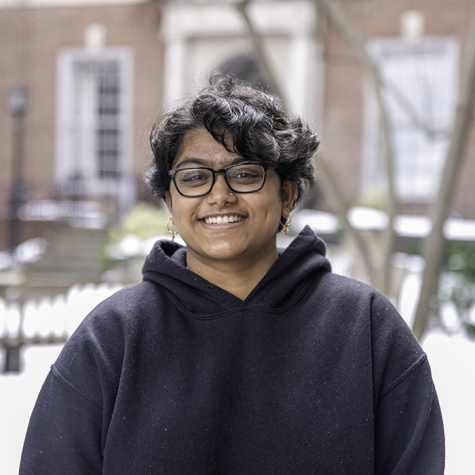The fight for the $15 minimum wage started in 2012. Adjusted for inflation, $15 in 2012 is worth $17.41 today. This January, Sen. Bernie Sanders (I-VT) led the Democratic Party in re-introducing the Raise the Wage Act in January. This bill would increase the federal minimum wage to $15 an hour by 2025 — as an amendment to Biden’s new COVID-19 relief plan. The amendment failed 52-48 in a Senate vote earlier this month, and the fight for a federal $15 minimum wage lost once again. Although this new minimum wage would help many, it’s time to critically look at what a livable wage means today, because $15 an hour just isn’t cutting it.
For the most expensive cities in America, the cost of living is about 40% to 80% higher than the national average. For New Yorkers, who live in the second most expensive city in the United States, the establishment of the $15 an hour minimum wage in 2019 is still not enough to tackle the city’s affordability crisis.
City Harvest, New York City’s largest supplier of food pantries, conducted a study that found that the $15 an hour minimum wage would be insufficient. Despite the increase in the wage rate, two in five households would still lack the income to cover necessities. Furthermore, the minimum wage is unable to keep up with the cost of living in this city. If someone received $15 an hour and worked 40 hours each week, they would receive $31,200 anually. That’s before taxes are deducted. People cannot maintain a dignified standard of living in New York City on a yearly pre-tax income of $31,200 today — much less so in 2025. The 2020 median income for low-income families of four ranges from $56,850 to $90,960 in New York City.
There are many factors that determine a living wage. The first, and most important, is the cost of housing. For a true living wage, it should not exceed 30% of income. According to the National Low-Income Housing Coalition’s “Out of Reach” report, the necessary minimum wage to afford the average two-bedroom apartment in the U.S. is $23.96 an hour.
To afford the average one-bedroom apartment, the minimum wage must be $19.56 an hour. In New York State, one needs to earn $32.53 an hour — or work 110 hours a week at the state’s minimum wage — to afford the average two-bedroom apartment.
This discrepancy between what the minimum wage provides and the wage needed to live in New York City only grows when looking at the various New York City neighborhoods and boroughs. For example, affording a one-bedroom apartment in Chinatown would require a $35.38 per hour wage. In order to pay for a two-bedroom apartment in the same neighborhood, someone would have to earn $40.38 per hour. That’s more than double the $15 hourly minimum wage many low-income workers receive in New York City.
Housing is not the only necesity that a livable wage needs to cover: food security, childcare and transportation must be affordable. If the average rent for a studio and one-bedroom apartment is greater than $2500, that leaves about $10,000 in pre-tax income per year for the rest of these needs. Groceries, on average, cost about $470 per month per person in New York City — that’s $5,640 per year. An unlimited subway pass costs $127 per month, or $1,524 a year. If you have a child too young for school, the average annual cost of childcare surpassed $16,000 in 2015. All together, it’s impossible to budget your needs into $31,200 a year, or $24,812 after taxes.
Fighting for a minimum wage greater than $15 an hour is not only essential to full-time employees, but to college students as well. College is one of the most demanding times in a person’s life: students are expected to take full course loads, participate in extracurricular activities, have rich social lives and pursue internships — many of which are unpaid. A wage of $25-$35 an hour enables low-income students to pursue fewer work-hours and achieve financial stability. Working fewer hours gives students more time to dedicate to academics, extracurricular activities, their friends, their family and, most importantly, themselves.
If $15 an hour was barely a living wage in 2012 — four years after the Great Recession — then why haven’t our demands for a living wage been adjusted for inflation? Why expect $15 an hour to maintain its value for four additional years?
Fighting to give workers a livable wage is a necessity. We can no longer rally behind $15 an hour as a livable wage because it does not satisfy the necessities that most people need to survive, especially in an expensive city like New York. I worked a total of nearly 30 hours in the last two weeks, some of which could have been used to complete homework, attend Parliamentary Debate Union practice or engage in a hobby that I enjoy. Instead, I earn a sum of money that will last me for the next two weeks. Luckily, I don’t need to earn enough to pay rent or utility bills. I am responsible only for myself, food I need and occasional miscellaneous needs. How many of our peers have that luxury?
Opinions expressed on the editorial pages are not necessarily those of WSN, and our publication of opinions is not an endorsement of them.
A version of this article appeared in the Monday, March 15, 2021 e-print edition. Email Srishti Bungle at [email protected].

























































































































































C L • Mar 15, 2021 at 11:26 am
When I was in high school working at Carvel Ice Cream, THAT was a minimum wage job. That was $3.15/hr back in the mid 80’s. Of course $15/ hr cannot support a grown adult living on their own much less with a family to support nowadays. Neither was $3.15/hr back then. It’s not meant to be a comfortable financial position to languish in. That’s why there are opportunities to show that you’re able to take on more responsibilities, improve your skills, …. to goad you to move past that point in your life. Move from an hourly worker to shift supervisor, to daytime manager, to store manager, to local manager, and so on. If that job doesn’t recognize your newly acquired abilities and allow you to move past minimum wage, move on to the next job where they value your improved skills. Of course, “walk the walk, don’t just talk the talk”. Prove and improve before clamoring for a raise. It’s always up to the individual to better themselves as in all situations of life.
P.M. • Mar 15, 2021 at 1:02 pm
I think it’s very disrespectful to comment this when you obviously didn’t read the article. For every 15 staff positions, there’s 1-3 managerial positions. Not everyone gets upward mobility and in the meantime, these workers need to survive. POC have the hardest times with upward mobility, so should they suffer while hoping they get a chance? You are being selfish and uneducated especially when all the knowledge is right there.